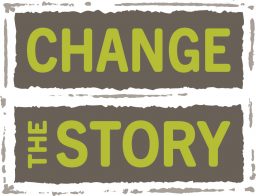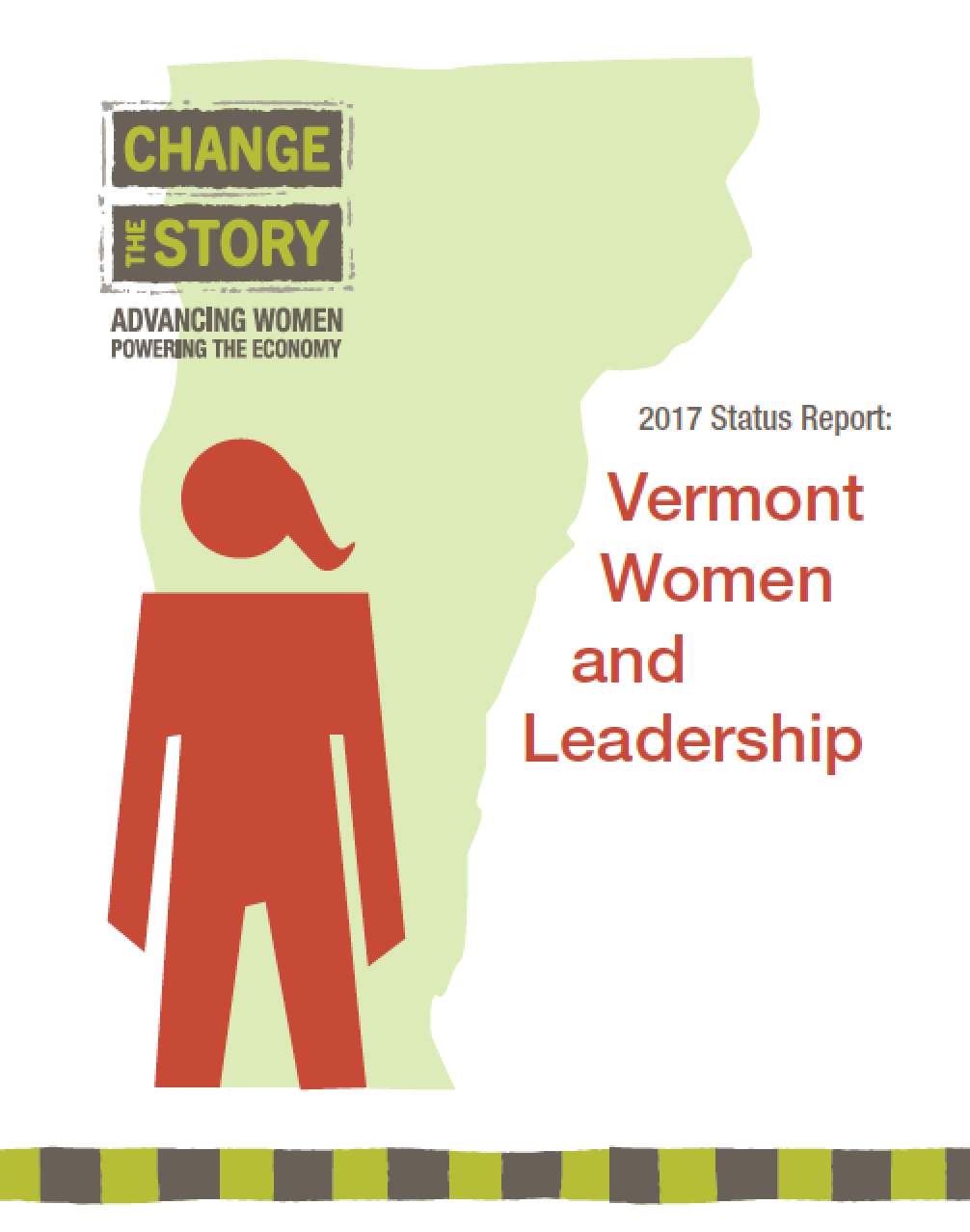
Apr 4, 2017 | Corporate, Economic Security, Leadership, State Initiatives, Talent Management, Vermont, Wage Gap, Work, Workplace Diversity
This is the fourth in a series of reports published by Change The Story on topics related to women’s economic status. This report focuses specifically on women’s leadership in political, civic, and professional spheres, and the way in which leadership is related to economic security. We focused on leadership roles that can be identified and counted, including elected or appointed public servants at the state and municipal levels, leaders of critical community institutions, and leaders of organizations in the private and non-profit sectors. That said, it is important that we acknowledge the myriad other ways in which Vermont women and men serve as leaders, many of them unrecognized by traditional measures but nonetheless critically important. Most of the data in this report is either new or not regularly collected or published. All of it is specific to Vermont and is vitally important – not just in terms of what it reflects about women, but because of its implications for the state as a whole.
Download the full report.
Download the companion slide deck.
Among our findings:
- By some measures Vermont is a national pacesetter in its share of women in public leadership.
- Women are 39.4% of those serving in Vermont’s General Assembly, 60% of the state’s Supreme Court Justices, 43% of Executive Cabinet members and 50% of its public university and college presidents.
- However, Vermont’s progress in achieving gender parity in leadership arenas has been uneven, slow-going or in some cases nonexistent.
- Just one of Vermont’s six statewide officials is a woman, trailing the national average by 7 percentage points. Indeed, of the 296 individuals ever elected to statewide office, only 11 have been women.
- Vermont and Mississippi are the only two states that have never sent a woman to Congress.
- While women’s participation in Vermont’s General Assembly is the second highest in the country, the pace of change has essentially leveled off since 1993; in 24 years, women’s share of legislative seats has increased by just four percentage points.
- When only 8% of Vermont’s highest grossing companies and 3 of its 15 hospitals are led by women, we can be certain that we are not making full use of all our state’s talent.
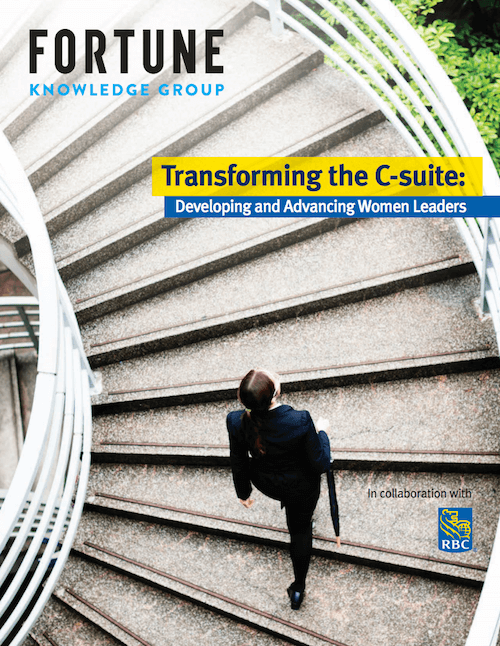
Apr 2, 2017 | Data, Leadership, Talent Management
[x_button shape=”square” size=”regular” float=”none” href=”http://changethestoryvt.org/wp-content/uploads/2017/03/4-Things-You-Can-Do_9-Data-Points.pdf” title=”Read the full article.” target=”blank” info=”none” info_place=”top” info_trigger=”hover”]Read the full article.[/x_button]
By: FORTUNE Knowledge Group
Transforming the C-suite: Developing and Advancing Women Leaders
This study examines gender parity in senior corporate leadership positions and provides six concrete recommendations for advancing gender diversity in the workplace.
“It is broadly acknowledged that diversity improves financial performance and a majority of organizations have a formal gender diversity initiative in place, the data shows that the number of women in senior leadership positions is still significantly low, with only 4.2% of women holding CEO positions in America’s 500 biggest companies. A study by Grant Thornton reveals that globally, women hold an average of just 21% of senior management roles and only 9% of CEO jobs.
What Did We Discover?
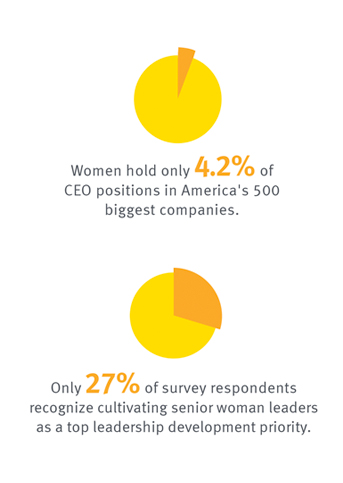
Research for this study included a survey to 1,000 senior leaders globally, qualitative interviews with senior female executives and a ranking of all FORTUNE 500 companies based on their level of gender diversity in leadership. Based on these findings, the report outlines six suggested strategies to improve gender diversity in your organization.”
[x_button shape=”square” size=”regular” float=”none” href=”http://changethestoryvt.org/wp-content/uploads/2017/03/4-Things-You-Can-Do_9-Data-Points.pdf” title=”Read the full article.” target=”blank” info=”none” info_place=”top” info_trigger=”hover”]Read the full article.[/x_button]
Dec 17, 2016 | Gender Bias, Talent Management, Workplace Diversity
By: Helm Construction Solutions (buildhelm.com)
This toolkit was developed by Kate Stephenson and Mel Baiser of HELM Construction Solutions with help and feedback from many of our colleagues in the building trades and social justice movements. It includes topics like:
- Defining the Challenge
- Changing Company Culture
- Hiring and Retaining a Diverse Team
- What is Privilege?
- Becoming an Ally
- Additional Resources
“We recognize this is just a first step towards raising awareness of these issues in our industry and our workplaces, but we felt the need to start somewhere.”
“Our goal is to increase the number of women, trans and gender non-conforming folks in the building trades, and to offer some specific help to progressive business owners who want to help but don’t know how to approach the problem.” - Kate Stephenson
If you have feedback on the Toolkit, ideas to share, or suggestions for additions, please email [email protected].
About HELM:
HELM Construction Solutions works with owners, designers and builders to create high performance and sustainable buildings and businesses. HELM provides a range of innovative services to help your business and your projects run smoothly and efficiently. We are committed to high performance and sustainable building practices that are not only right for the environment, but result in more durable buildings, better indoor air quality, comfort and a significant reduction in the operating costs of your home or business. HELM is a collaborative team with over thirty years of combined construction, management, leadership and education expertise.
[x_button shape=”square” size=”regular” float=”none” href=”http://changethestoryvt.org/wp-content/uploads/2016/12/Breaking-Down-Bias-v1.0-September-2016.pdf” title=”Download the toolkit” target=”blank” info=”none” info_place=”top” info_trigger=”hover”]Download the toolkit.[/x_button]
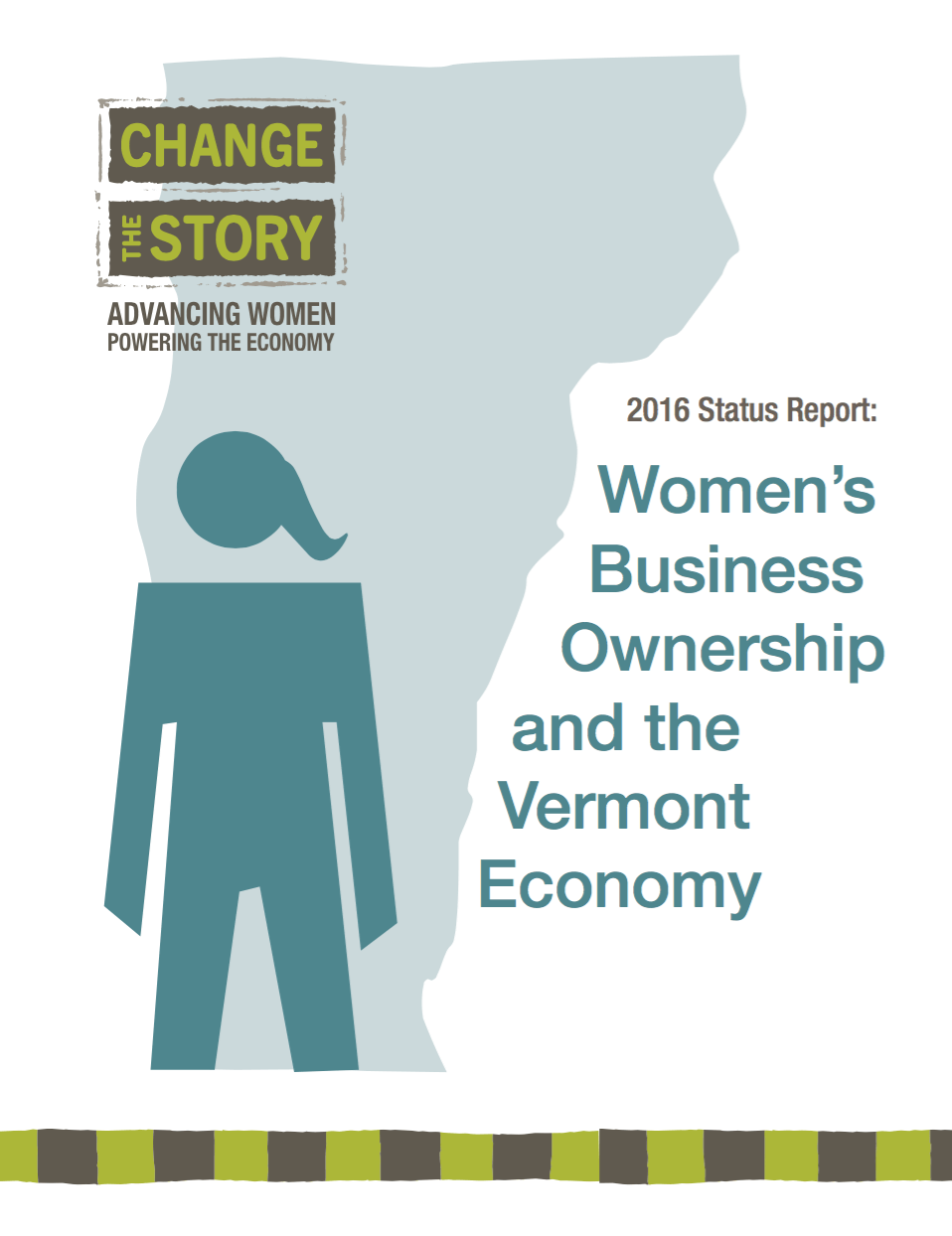
Oct 17, 2016 | Corporate, Economic Security, Entrepreneurs, Occupational Segregation, State Initiatives, Talent Management, Vermont, Wage Gap, Work, Workplace Diversity
This is the third in a series of briefs published by Change The Story on topics related to women’s economic status. This report focuses specifically on business ownership by women and its potential to bolster and invigorate Vermont’s economy. Like the majority of national and regional reports on businesses, this report relies heavily on data from the 2012 U.S. Census Survey of Business Owners. Unless otherwise noted, all statistics are specific to Vermont. To date, we have had to rely on national reports to define the health of Vermont’s women-owned businesses. But their conclusions paint conflicting pictures: one analysis of 2014 data ranked Vermont first among states for entrepreneurs, while another ranked Vermont 50th. The difference between these rankings begs the question: What is the real story for Vermont women and business ownership?
Download the full report.
Download the companion slide deck.
Among the findings:
- Women-owned businesses are vital to Vermont’s economy.
- Women own 23,417 businesses in Vermont, which employ 36,326 people, and generate annual revenues of approximately $2.2 billion.
- Although growing at a faster rate than businesses owned by men, women-owned firms in Vermont are fewer in number, smaller in size, and lower in annual revenues.
- Between 2007-2011, the number of female-owned businesses grew 15%; during the same period male-owned businesses grew by only 6%.
- Women-owned businesses generate 9% of gross revenues and employ 12% of workers in privately-held Vermont firms.
- Women business owners are significantly underrepresented in 9 of the 10 highest grossing sectors. This limits financial opportunities for individual women and their potential contributions to Vermont’s economy.
- Women-owned businesses have the potential to play a much bigger role in Vermont’s economic development.
- If the percent of women-owned businesses that are employers matched that of male-owned businesses, and those firms had the same average receipts, it would add $3.8 billion to Vermont’s economy.
- If Vermont women chose business ownership at the same rate as men, it would result in more than 10,500 new businesses.
- If just 1 in 4 of the existing 20,786 women-owned businesses without employees hired just one worker, it would result in an additional 5,200 new jobs.
- Maximizing the potential of women-owned businesses - and indeed all of VT businesses - requires new and better data.
- While existing business-related data sources can provide reliable top-line statistics, they are less useful in revealing nuanced information about the motivations, challenges or opportunities experienced by Vermont business owners. Focusing on the finer points of what makes a business successful is critical to Vermont’s economic future.
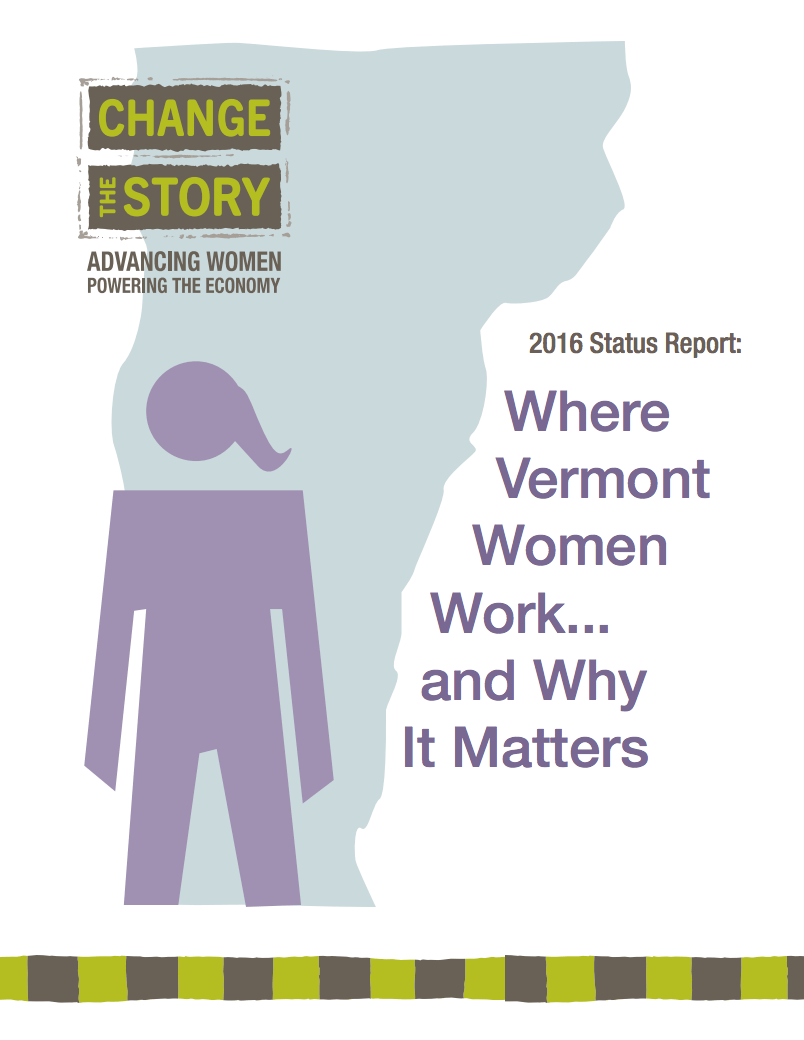
Apr 11, 2016 | Corporate, Economic Security, Occupational Segregation, State Initiatives, Talent Management, Vermont, Wage Gap, Work, Workplace Diversity
This is the second in a series of briefs published by Change The Story on topics related to women’s economic status. This report focuses specifically on occupational segregation, its impact on women’s wages, and the way in which it compromises Vermont’s ability to make the most of home-grown talent. Much of the data in this report is new or not regularly collected or published. All of it is specific to Vermont and all is critical - not just in terms of what it reflects about women, but in its implications for the entire Vermont economy.
Download the full report.
Download the companion slide deck.
Among our findings:
- Women who work full-time struggle to make ends meet.
- Of the 15 occupations in which women’s median annual salaries top $35,000, nearly half are in male-dominated fields.
- Occupational segregation, the uneven distribution of labor across and within sectors by gender, is the norm – not the exception – in Vermont.
- In 15 of 25 major occupational categories tracked by the U.S. Census, either men or women are 70% or more of all workers.
- Forty years after Title IX, women’s work continues to be women’s work.
- The gender balance in most traditionally female occupations has remained nearly constant from 1970-2013. Nearly half of women working full-time in Vermont continue to be employed in the same occupations in which they worked forty years ago.
- The next generation of female electricians, coders, and engineers isn’t in the pipeline.
- Young women are a small fraction of students who completed computer science, engineering, trades and technical programs at state career and technical high schools: 9% of those in information technology; 6% in manufacturing; 6% in transportation; and 5% in architecture and construction.
- While the gender breakdown is essentially equal among high school students taking Advanced Placement (AP) tests in calculus, chemistry, and biology, young women are a minority of students earning college degrees in physics, chemistry, computer science, economics, and engineering.
- Occupational segregation is costly – not just for women, but for employers and the Vermont economy.
- Nearly 60% of high-wage, high-demand entry-level occupations are those in which women are a significant minority of workers. Occupational segregation limits the pool of potential workers for jobs employers need to fill.
Apr 8, 2016 | Corporate, Economic Security, Leadership, Occupational Segregation, Talent Management, Wage Gap, Work, Workplace Diversity
“The United States could add up to $4.3 trillion in annual GDP in 2025 if women attain full gender equality. In a new report, The power of parity: Advancing women’s equality in the United States, the McKinsey Global Institute (MGI) finds that every US state and city can add at least 5 percent to their GDP in that period by advancing the economic potential of women. Half of US states have the potential to add more than 10 percent, and the country’s 50 largest cities can increase GDP by 6 to 13 percent.
While the barriers hindering women from fully participating in the labor market make it unlikely that they will attain full gender equality within a decade, the report finds that in a best-in-class scenario—in which each US state matches the state with the fastest rate of improvement toward gender parity in work over the past decade—some $2.1 trillion of incremental GDP could be added in 2025. That is 10 percent higher than in a business-as-usual scenario.”
[x_button shape=”square” size=”regular” float=”none” href=”http://www.mckinsey.com/global-themes/employment-and-growth/The-power-of-parity-Advancing-womens-equality-in-the-United-States?cid=mckwomen-eml-alt-mgi-mck-oth-1604″ title=”The power of parity: Advancing women’s equality in the United States” target=”blank” info=”none” info_place=”top” info_trigger=”hover”]Read more and download the full report[/x_button]

